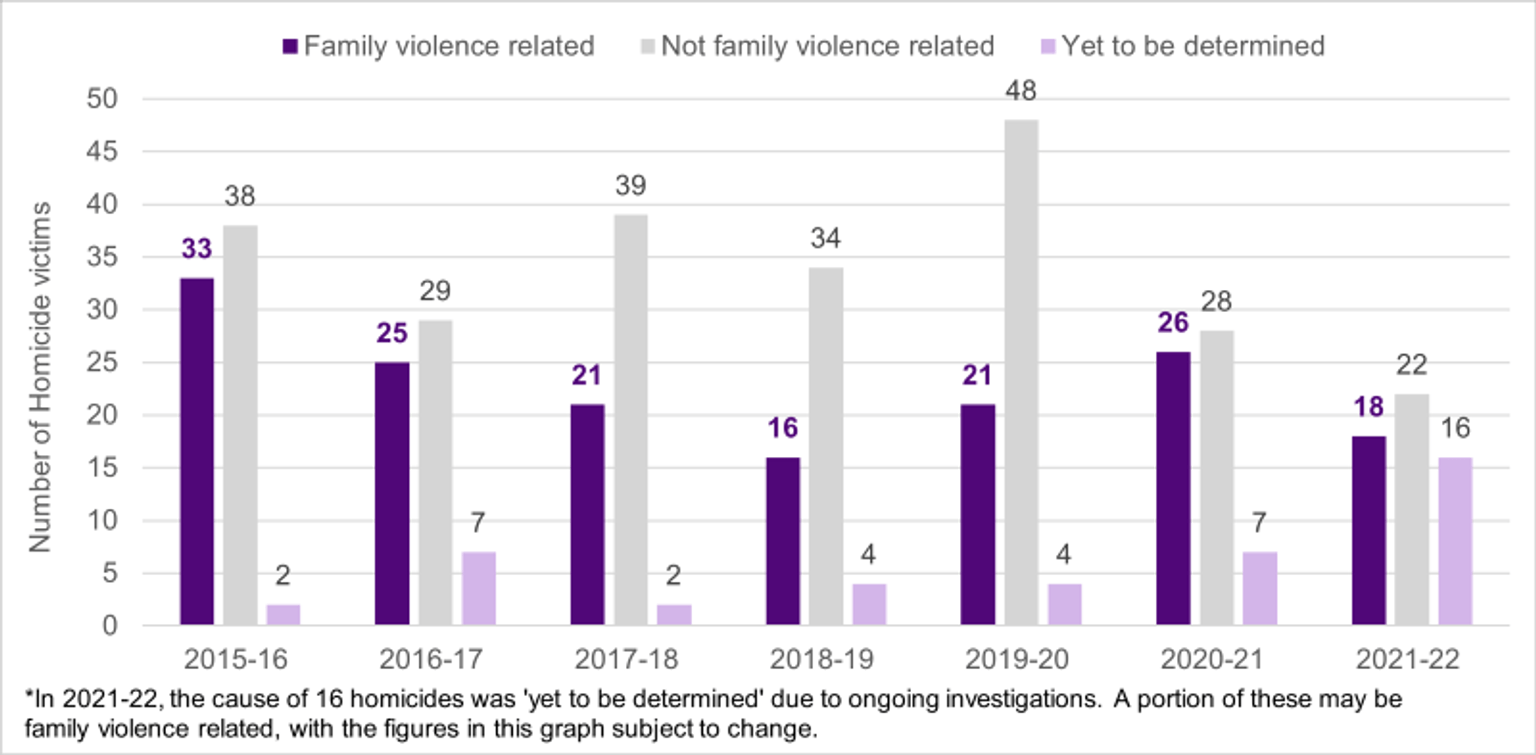Indicator: Decrease in family violence deaths
Measure: Number of family violence-related deaths
Analysis of data over the past seven financial years indicates that the number of family violence homicides has not significantly decreased. However, 2015–16 had the highest number of family violence-related homicides over this period, with a lower number of homicides in every year since.
Most family violence related homicide victims are women and girls, representing 14 of the 18 victims in 2021–22.
The time lag between when a homicide is reported to the register and when an investigation concludes (and identifies whether a homicide was related to family violence) is the key reason for the higher number of ‘yet to be determined’ homicides in the two most recent years, as shown in Figure 1.
Table 1 provides Victorian data on the number and rate (per 100,000 people) of family violence related homicide victims from 2015–16 to 2021–22. While it may appear that family violence related homicides are decreasing, figures for 2021–22 are likely to increase as investigations into ‘yet to be determined’ homicides are finalised.
Table 1: Family violence related homicide victims - number and rate per 100,000
| Type of homicide victim | 2015-16 | 2016-17 | 2017-18 | 2018-19 | 2019-20 | 2020-21 | 2021-22 |
|---|---|---|---|---|---|---|---|
| Number of family violence related homicide victims | 33 | 25 | 21 | 16 | 21 | 26 | 18 |
| Family violence related victims - rate per 100,000 | 0.53 | 0.40 | 0.33 | 0.24 | 0.32 | 0.40 | 0.271 |
Source: Coroners Court of Victoria data extracted from the Victorian Homicide Register by the Crime Statistics Agency
Notes
1This figure is likely to change as more ‘yet to be determined’ homicides are finalised by investigations and the Coroner.
Updated
